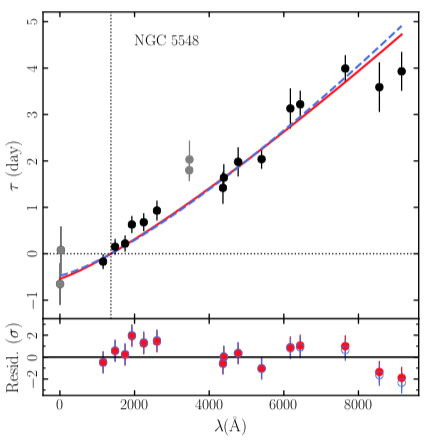Modelling the UV/optical continuum time-lags in AGN
A group of astronomers, including Prof. Iossif Papadakis of the Institute of Astrophysics and the Department of Physics of the University of Crete have recently explained the correlated optical/Ultraviolet(UV) variations that are observed in Active Galactic Nuclei (AGN).

Approximately 10 per cent of nearby galaxies host active nuclei, which emit enormous amount of light (equivalent to the light of the whole galaxy) from regions which are not much larger than our Solar system. AGN are the most powerful, persistent objects in the Universe. We currently believe that their enormous luminosity is powered by the accretion of gas to supermassive black holes which reside at their center (their mass being million to billion times larger than the mass of our Sun). The gas forms a disc, which is very small in size and cannot be resolved by any telescope on Earth. We are therefore forced to test our theory via other means, like the variations we observed in the optical and UV bands.
So far, the results appeared to suggest that the discs must be significantly larger than what the theory would suggest. This discrepancy was one of the most serious problems regarding our understanding of the power mechanism in AGN.
Recently, Prof Papadakis and his collaborators studied the response of an accretion disc in the case when it is illuminated by an intense X-ray source, taking into account all the general and special relativistic effects, as well as the important atomic physics effects which determine the amount of X-rays that the disc will absorb. They modeled the expected variations and delays between them (in the optical/UV band) and they showed that, despite previous claims, the observations are fully consistent with the standard accretion disc models. In addition to provide an explanation for the apparent discrepancies between observations and our theoretical models, the results from this work have also important implications regarding the physical processes, the spin of the supermassive black holes and the geometry between the X-ray source and the accretion discs in these enigmatic systems
Article: “Modelling the UV/optical continuum time-lags in AGN”, Kammoun E., Papadakis I. E., & Dovciak, M. 2021, MNRAS, 503, 4163 – October 2021
